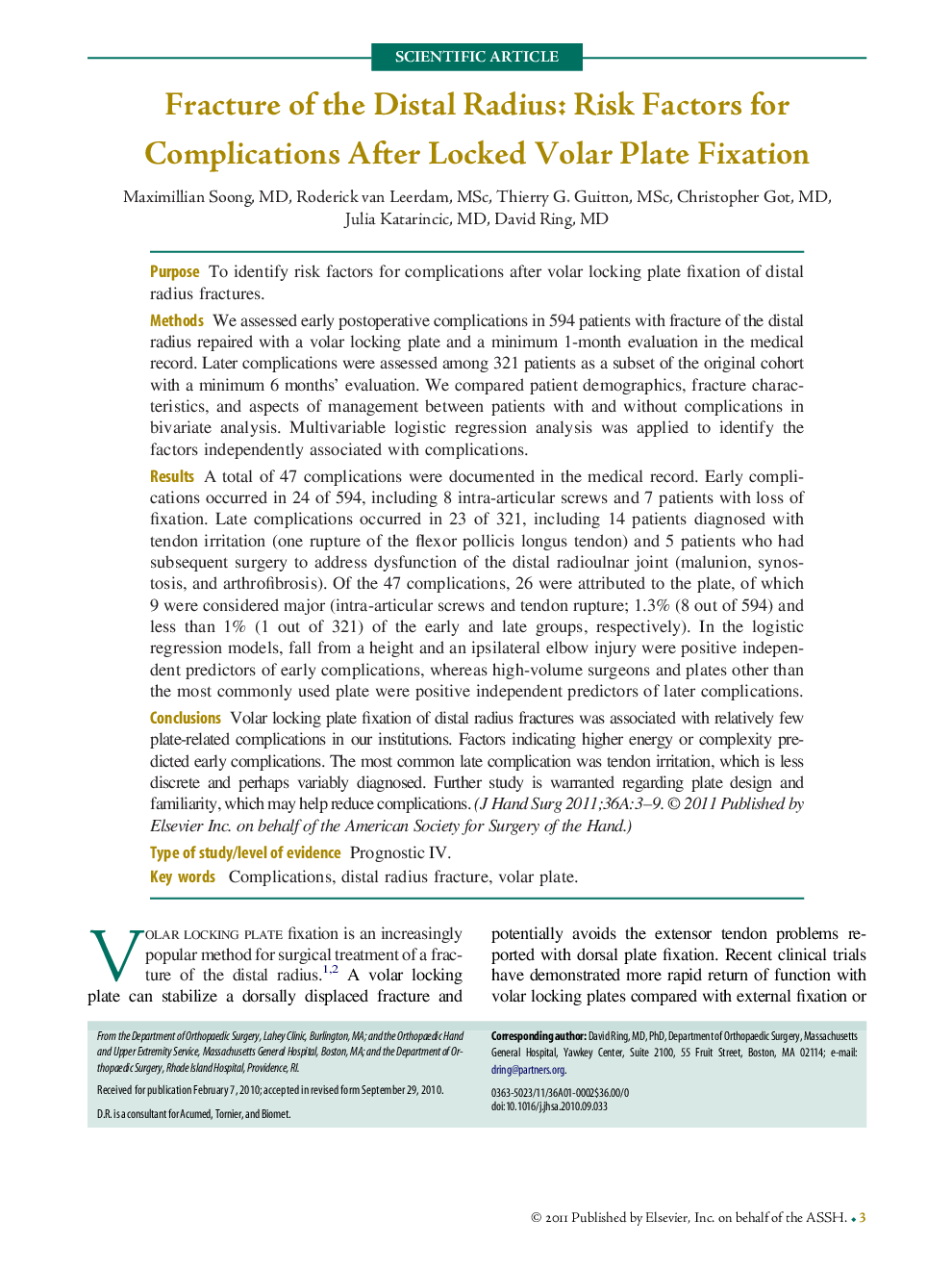| کد مقاله | کد نشریه | سال انتشار | مقاله انگلیسی | نسخه تمام متن |
|---|---|---|---|---|
| 4070626 | 1604413 | 2011 | 7 صفحه PDF | دانلود رایگان |

PurposeTo identify risk factors for complications after volar locking plate fixation of distal radius fractures.MethodsWe assessed early postoperative complications in 594 patients with fracture of the distal radius repaired with a volar locking plate and a minimum 1-month evaluation in the medical record. Later complications were assessed among 321 patients as a subset of the original cohort with a minimum 6 months' evaluation. We compared patient demographics, fracture characteristics, and aspects of management between patients with and without complications in bivariate analysis. Multivariable logistic regression analysis was applied to identify the factors independently associated with complications.ResultsA total of 47 complications were documented in the medical record. Early complications occurred in 24 of 594, including 8 intra-articular screws and 7 patients with loss of fixation. Late complications occurred in 23 of 321, including 14 patients diagnosed with tendon irritation (one rupture of the flexor pollicis longus tendon) and 5 patients who had subsequent surgery to address dysfunction of the distal radioulnar joint (malunion, synostosis, and arthrofibrosis). Of the 47 complications, 26 were attributed to the plate, of which 9 were considered major (intra-articular screws and tendon rupture; 1.3% (8 out of 594) and less than 1% (1 out of 321) of the early and late groups, respectively). In the logistic regression models, fall from a height and an ipsilateral elbow injury were positive independent predictors of early complications, whereas high-volume surgeons and plates other than the most commonly used plate were positive independent predictors of later complications.ConclusionsVolar locking plate fixation of distal radius fractures was associated with relatively few plate-related complications in our institutions. Factors indicating higher energy or complexity predicted early complications. The most common late complication was tendon irritation, which is less discrete and perhaps variably diagnosed. Further study is warranted regarding plate design and familiarity, which may help reduce complications.Type of study/level of evidencePrognostic IV.
Journal: The Journal of Hand Surgery - Volume 36, Issue 1, January 2011, Pages 3–9